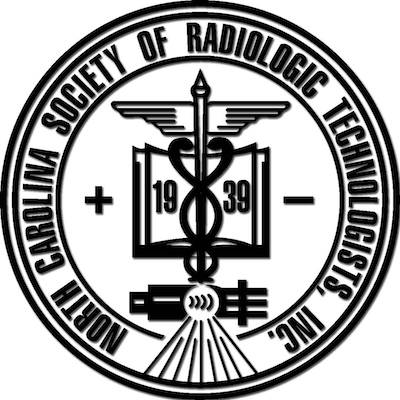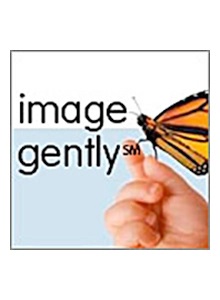NCSRT, Inc. — Scientific Papers: Rules & Regulations
Guidelines, eligibility, formatting, judging criteria, and submission details.
Categories for Submission
Subject matter will be from the radiologic sciences in the following categories:
- Integrated Review of Literature Paper
- Primary Research Paper
Deadline for Submission
All manuscripts and paper application forms to be considered must be received by February 20, 2026. The manuscripts will be sent to the Chairperson of the Scientific Paper Committee at Amber.edwards2024@gmail.com.
Eligibility
Technologists, advanced students, or student members holding active membership will be allowed to participate. Membership will be based on records, paper application information, and the decision of the Scientific Paper Committee. The President and Scientific Paper Committee members are exempt from competing. There will be no more than two authors for any paper submitted for competition.
Description of Categories
Category 1: Integrated Review of Literature
An Integrated Review of Literature paper demonstrates the writer’s ability to research the work of numerous authors in review of a particular topic. The goal is to develop a comprehensive review of what numerous authors say about a particular topic. The writer must research literature from various authors and synthesize an original explanation about the topic. Do not present facts like a book report—present authors’ views collectively, linking common ideas, thoughts, and/or differences.
Category 2: Primary Research
Papers should present a hypothesis or problem to be researched through experimentation/data collection and statements of results. Supporting literature may enhance development and proof of the stated hypothesis.
Format
Author(s) must follow APA, AMA, or MLA Manual of Style for references and formatting.
A. Title Page
The Title Page provides necessary contact information for the committee. Copies sent to judges must not include authors’ names, addresses, or institutions.
- Title of the Manuscript (on all 4 copies)
- Division and Category of Competition (on all 4 copies)
- Name of the institution and author(s), address and telephone number (on the single identified copy only)
B. Abstract Page
- Summarize significant information from the paper (best written after the paper is complete).
- Limited to 75 words.
- Convey the essence of the paper.
C. Formatting: Required Sections
Use online resources to ensure proper APA/AMA/MLA adherence. Sections by paper type:
- Introduction
- Review of Literature/Methods and Materials
- Discussion/Results
- Case Studies (if applicable)
- Implications for Practice
- Conclusion or Summary
- References
- Introduction
- Methods/Materials
- Discussion/Results
- Case Studies (if applicable)
- Implications for Practice
- Findings
- Conclusion or Summary
- References
D. Content of Paper Sections
- Introduction: Brief description and background.
- Integrated Review of Literature/Methods and Materials: Plan for research or literature review.
- Discussion: Present data, results, or current information in an organized sequence; case studies may be included here or separately.
- Case Studies (optional): Support the Discussion content; may be a separate section.
- Conclusion/Summary: Describe results and limitations.
- References: Credit sources within the text and in the reference list.
VII. Judging
- The Scientific Paper Committee evaluates all submissions (see committee guiding principles).
- Manuscripts remain Society property until after results are tabulated.
- Active membership status is verified; non-members at time of application are disqualified.
- Judging decisions are final.
- To qualify for 1st or 2nd place, the paper must average at least 60 points.
- With author permission, winning papers may be forwarded to the web liaison for possible posting.
Consolidated Judging Scale
| Criterion | Description | Top Score | Mid Score | Low Score |
|---|---|---|---|---|
| Educational / Technical Value | Advances knowledge and value across radiologic specialties. | Knowledge Greatly Increased — 30 | Somewhat Increased — 24 | No New Knowledge — 10 |
| Development of Content | Thesis/hypothesis development and depth of investigation. | Fully Developed — 20 | Acceptable — 14 | Limited — 9 |
| Application of Technology | Clear practical application within a radiologic specialty. | Broad Application — 20 | Limited — 14 | No Clear Application — 9 |
| Organization of Material | Clarity, self-explanatory text, helpful visuals if used. | Promotes Clear Understanding — 10 | Acceptable Understanding — 5 | Overall Unclear — 0 |
| Mechanics | Grammar, spelling, neatness, acceptable documentation form. | Superior — 10 | Acceptable — 5 | Needs Major Improvement — 0 |
J. Illustrations / Tables / Figures
View requirements
- Not mandatory; provide if needed to clarify text (for all copies).
- No identifying marks (hospital, patient, etc.). Reference external items with permission.
- Place all illustrations/tables/figures at the end of the paper.
- Captions may appear on the same page as the item if space allows; otherwise collect captions on one page.
- Human subjects must not be identifiable.
- Tables must be double-spaced; title and table number flush left.
- Explain abbreviations in a footnote.
K. Manuscript Guidelines
View requirements
- Typed, double-spaced, white 8½″ × 11″ paper, one side only.
- 1½″ margins on all sides.
- Length not to exceed 1,500 words.
- Submit four copies: three unidentified and one identified (identified copy remains with Committee Chair during judging).
- Manuscript must be original and not previously published/accepted.
L. Notification
- Disqualified authors will be notified via email after the Committee decision.
- Thirty (30) days prior to the Annual Conference, all placing authors will be notified via email.
M. Prizes
Two qualifying manuscripts from each category in each division will be selected. Awards are presented during the Annual Conference for Staff, Advanced Student, and Student Divisions:
- Category 1: Integrated Review of Literature — First & Second Place
- Category 2: Primary Research Paper — First & Second Place
For submissions email: Amber.edwards2024@gmail.com


